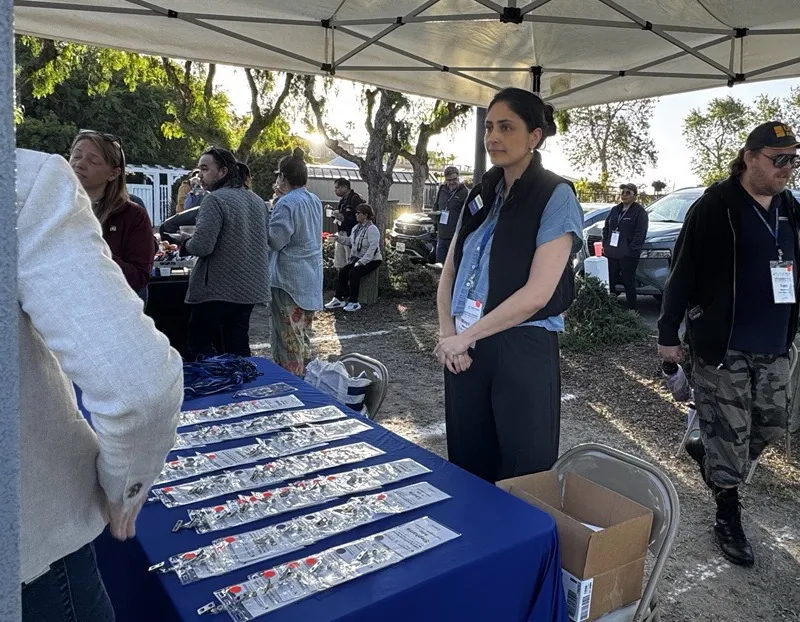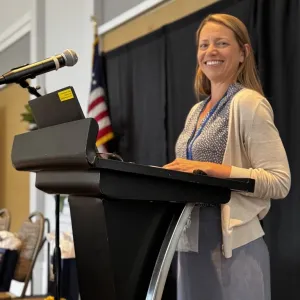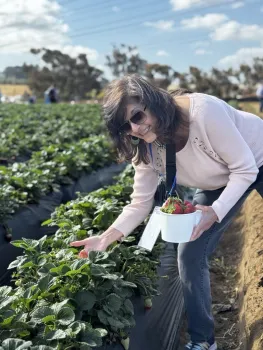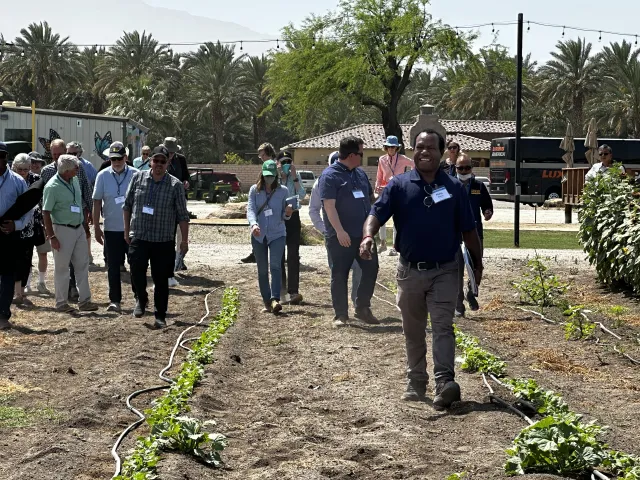
In a state where agriculture is a $59 billion industry, a quiet revolution is changing how Californians experience farming—not just as consumers, but as guests, learners, and partners. Agritourism, once a niche side venture for farmers, is now a significant and growing segment of the rural economy. Leading this transformation is the University of California Agriculture and Natural Resources (UC ANR), which has spent over 25 years equipping farmers to open their gates and diversify their income.
“Farmers are, you know, rightfully taking advantage of that and offering something,” said Paul Towers, executive director of the Community Alliance with Family Farmers (CAF). “That’s what everyday people are excited to see; that’s a delicious fresh strawberry, or being able to try that, you know, new cuisine, or to make a wreath, or to tour the farm and see the practices that they're implementing on the ground.”
“Agritourism is not just an economic strategy—it’s a community strategy,” said Rachael Callahan, UC ANR’s statewide agritourism coordinator. “When we bring people onto farms, we’re not just selling an experience. We’re building understanding, relationships, and long-term support for California agriculture.”

One standout example is the Hadwick Family Farm in Modoc County. After Heather and Bryon Hadwick attended UC ANR’s Agritourism Intensive workshop in 2016, they launched a pumpkin patch that has become a beloved October tradition.
“Heather had been dreaming about starting a pumpkin patch, and Bryon wasn’t quite convinced,” recalled Callahan. “But once they attended the training in Redding, everything clicked. Now, they’re a seasonal attraction and a center for community connection.”
“This year marks our 10th season, and opening the pumpkin patch has been a wonderful addition to our farm. It's brought more families out to experience what we do, helped us diversify our income, and created a fun, family tradition that our community looks forward to every fall. We have watched our visitors grow up for the last 10 years and I love that we get to be a little piece of their family memories,” said Heather Hadwick.
In San Diego County, another graduate of the intensive program turned their training into action. They launched their own agritourism enterprise and later partnered with the local Cooperative Extension office to host a networking event for fellow farmers.
“It’s powerful to see someone go from learner to leader in their own community,” said Callahan.
UC ANR has supported hundreds of similar journeys across the state—from pumpkin patches and flower fields to cheese tastings and farm stays. Its California Agritourism website, newsletter, and in-person workshops serve as a lifeline for farmers navigating regulations, liability concerns, and business planning.
“These are some of the fantastic things that agritourism has to offer,” said Towers. “Farmers increasingly see that it can help them economically, socially, and environmentally connect with their communities.”
“UC ANR provides many of the critical resources to help farmers meet the kinds of compliance,” he added.
“Agritourism is a big umbrella,” Callahan said. “And farmers are incredibly creative. Our job is to help them take those first steps and walk with them as they grow.”
This adaptability became especially critical when the COVID-19 pandemic disrupted food supply chains and shuttered restaurants. Many small farms faced economic uncertainty, but those who had invested in agritourism—or pivoted quickly—found new ways to reach their communities.

“Farms became safe outdoor spaces when parks and schools were closed,” Callahan explained. “And farm stands, U-picks and tours allowed families to connect with local food and open-air recreation. That visibility created lasting bonds.”
“Watching our visitors’ kids grow up every fall is my favorite part. It's truly a blessing to have a business that gives people joy and teaches them about the importance of agriculture,” said Heather Hadwick.
Even as pandemic restrictions eased, public interest in local farm experiences remained strong. Today, California agritourism continues to expand. In 2017, 1,130 California farms reported income from agritourism. That number now exceeds 2,000, according to UC estimates.
California is among the top states in agritourism revenue and variety, but the competition is intense. Texas leads in hunting leases and extensive ranch experiences; New York thrives with its apple orchards and maple syrup tours; Vermont sets the bar in farm-to-table experiences and rural branding.
Still, California’s strength lies in its diversity of landscape, products, and people, and UC ANR’s approach reflects that. From the vineyards of Napa to the olive groves of San Luis Obispo, from coastal flower farms to Sierra foothill dairies, UC ANR helps local operations tailor their visitor experiences to their values and environment.
“We’re not trying to replicate one model across the state,” said Callahan. “We’re trying to listen to what each farmer envisions and help make that real.”
With support from partners like Visit California, California Grown, and the California Department of Food and Agriculture, momentum around agritourism in California keeps building. The 2025 California Agritourism Summit—organized by UC ANR—brought together stakeholders from across the state to collaborate on opportunities and shared challenges.
A recurring theme at the summit was that agritourism is as much about telling stories as it is about selling products. For many, it's not just a business model—it’s a way to share culture, history, and connection to the land with visitors from all walks of life.
“There’s so much momentum,” said Callahan. “And it’s about more than business. Agritourism is helping us protect small farms, strengthen rural economies, and reconnect people to the land.”
In a time when many are seeking meaning, community, and sustainability, agritourism offers more than just a day on the farm. It’s helping write a new chapter in California agriculture where every visitor becomes part of the story.
California grows hundreds of crops, offering unique chances for people, especially youth, to learn where their food comes from. Agritourism goes beyond hands-on lessons; it also helps small farmers earn income and stay in business.
UC ANR supports this growing movement through local programs, expert advice, and materials in many languages. Its efforts promote fairness, innovation, and sustainability across the state’s farming communities.
“It's important to have agritourism for several reasons,” said Glenda Humiston, University of California vice president for agriculture and natural resources. “First and foremost, it's a profit center for the farmers themselves. Hopefully, they're going to make some money off of this. But, in some ways, the bigger issue is helping people connect to where their food comes from…”
Learn more about agritourism: https://ucanr.edu/site/california-agritourism


